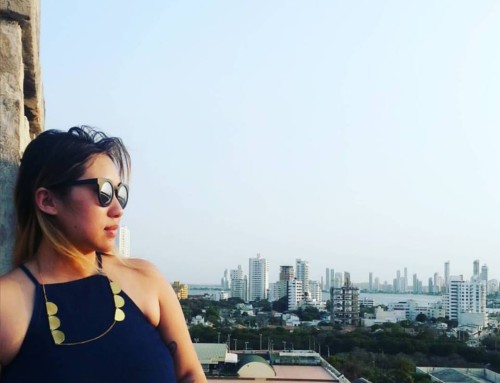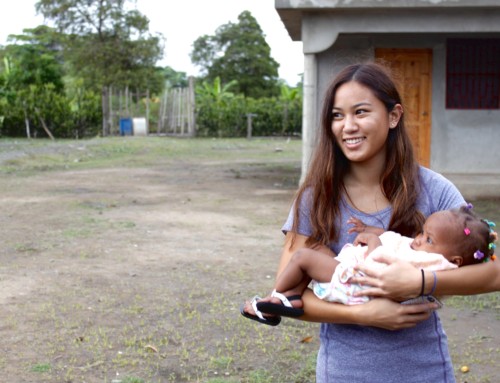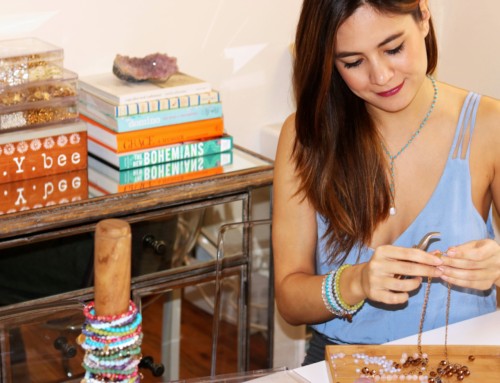“Each step you take toward your goal is that much closer to making it happen. It can be a long road before any change can be seen…so take it day by day and keep at it.” – Sheila Morovati

Crayons. They are something we took for granted as children and now look back on with nostalgia. Oooh, the glorious days of nap time and scheduled coloring dates. Who doesn’t want to go back to those less complicated, idyllic days of life?
Where most people see nostalgia, Sheila Morovati, saw an opportunity. After learning how many new and barely used crayons are thrown out each year, she decided to take action by founding the Crayon Collection. Through her organization, Sheila has created a way for restaurants to donate their like-new and barely used crayons to schools in their community. This partnership not only benefits the schools receiving the crayons, it benefits the environment too, by reducing the amount of non-biodegradable waste each year.
As this week’s #WCW Spotlight, Sheila shares how a night out to dinner with her then toddler daughter turned into an organization that not only provides crayons to schools, but creative partnerships with artists, bringing arts back into education.

Me: How did the idea for the Crayon Collection come about?
Sheila: When my daughter was 2 years old she was an extremely picky eater and there was 1 kid-friendly restaurant that we knew she would not only eat her meal but also enjoy it fully. With each meal, my daughter would receive a brand new pack of 4 crayons, which she would use for a few minutes until her order arrived. As we would eat our meal the like-new crayons would roll to the side of the table or onto the floor only to be trashed with the remainder of our meals remnants. We frequented this restaurant 3-4 times per week so the crayons we were given added up to about 50-60 within a month. I noticed the tables around us also left their crayons behind so I did some research and learned that restaurants in America were throwing away over 150 MILLION crayons per year. Crayons are made of paraffin wax and never decompose – negatively impacting our environment. Simultaneously, systemic budget cuts in education were forcing teachers across America to spend an average of $750/year out-of-pocket on basic classroom supplies. I could see there was a solution to this problem and I decided to do something about it.

Me: Why is recycling crayons and getting them to kids and schools an important mission in your life?
Sheila: It really just doesn’t make sense to me to see restaurants throw away crayons that do not decompose into landfills when some kids around the world don’t have access to any crayons. How can we allow that to continue? I am so proud of all that we have done and the change that we have made, but there is still much more to do.
Me: When you’ve approached restaurants about your initiative to recycle crayons, how do people typically react?
Sheila: We were the first organization to ask restaurants to collect the crayons their diners left behind. It was a new idea and a foreign idea for many chains we contact. It used to take a lot of explanation and convincing for restaurants to get involved and help us collect the left behind crayons. Now, each time we approach a restaurant they are much more open and willing to work with us. We believe that a new “normal” is developing whereby throwing away perfectly good crayons is becoming a thing of the past. That is so exciting because we are able to really infuse eco and social responsibility into these large corporations.

Me: After securing a partnership or donation from a restaurant (or individual donations), how do you then go about selecting a school to partner with and donate to?
Sheila: We know there is a lot of need out there but we aim to donate crayons to schools that are in need of supplies – specifically crayons. The next criteria we look for is proximity. The crayon recipient school to be close enough to simply drive over and pick up the crayons. This is a community effort and we really want the schools and restaurants to be a part of the same community.
Me: One of the things you do with Crayon Collection is invite kids to come and be a part of the donation experience, which I think is amazing. Why is this so important to you?
Sheila: I believe that our mission can be applied to virtually anything in the world. The idea of collecting crayons is very relatable because so many kids have access to this art supply, so it’s an easy object to collect and redistribute. However, we hope to inspire people to really consider “would- be waste” and to think about the under served communities nearby that really depend on these donations. The kids who participate in the Crayon Collection are our future and we hope that planting a seed of philanthropy and environmentalism with the 1 act of collecting and redistributing a crayon is a golden opportunity to teach many layered lessons.

Me: Has giving back always been a major part of your life? Or is it something that has come about recently?
Sheila: I came to the United Stated in 1979, so I have a deep understanding of what life is like outside this country. We are blessed with so much abundance here and I cannot accept the nonchalance of throwing a perfectly good crayon away. I am far too aware of the lives of children outside the US, and even within our borders, that consist of not much more than the clothes on their backs. It’s a sad reality and if we can just think about these children and get these unwanted crayons into their hands, then maybe their lives will be just a little brighter.
Me: Another thing I love about your organization is that you partner with artists to create special initiatives and projects involving the crayons being donated. How did this program come to life?
Sheila: The donated crayons can be used for homework and for coloring, BUT we realized that there are SO many crayons being donated that there’s an abundance of supplies. So we thought of infusing the classrooms with an art project that the teachers could easily adopt with no added cost. Having board members like Honor Fraser has given us access to some of the most incredible artists in Los Angeles. These are people who are passionate about the Crayon Collection and children having access to art so they generously came up with some projects that would be interesting and inexpensive for classrooms around the US to implement. What’s better than a professional artist developing crayon art curriculum for America’s classroom?

Me: Recently you’ve partnered with the National Endowment of the Arts. What are some of the exciting things you’ve been able to create out of this partnership?
Sheila: We are not a partner of National Endowment of the Arts but they guided us and suggested that we help Crayon Collection recipient schools by providing an educational guide with ideas on how to use the crayons in interesting ways. This is why we have asked artists like Kenny Scharf and Annie Lapin to help us create ways to use the crayons that will allow for deeper artistic learning.
Me: You clearly do so much more than simply collect and donate crayons. Why go the extra mile?
Sheila: The crayon is an example of how easily we can recycle, reduce, and reuse things around our homes to benefit the environment and nearby communities in need. We want to really create awareness that the environment needs us all to be more eco-conscious and the children we serve are also in such high need of so many things, aside from crayons, that it’s a win-win.

Me: You have kids of your own. What do you hope they are learning about giving back and connecting with others through this process?
Sheila: I have seen first hand the many benefits that volunteering has provided my children with. The conversations that come up about what life might be like for children who don’t live in communities like ours and what things we may take for granted. Delivering the crayons with my kids to nearby communities also allows them to see children just like them in schools that are less.
Me: As mom, you already have a full plate raising kids. Why is it important you to make the time to give back and create the Crayon Collection with your limited free time?
Sheila: The Crayon Collection has been an incredibly effective way for me to teach many valuable lessons to my kids. I am able to show them that there are kids who have no crayons which is why we should never just leave our barely used crayons behind at a restaurant. I can teach them that these crayons are made of paraffin wax and they never decompose and that our precious earth is reacting to so much unnecessary pollution and waste. We have to do our part and the crayon is the most relatable object to get through to children with. PLUS, research shows that kids who give back are happier.

Me: What has been the most surprising part of your give back efforts? What about the most inspiring part of this adventure?
Sheila: What has been most surprising and most humbling is the response we have had from people all over the world. Everyone we have shared our story with has been incredibly supportive and has always said, “that make so much sense.” One time, a teacher in Hong Kong emailed us looking for support about how to start her own Crayon Collection. We explained the process of how to start one and then a month later she said their bin was full and needed help finding a school or organization to donate the crayons to. I used the power of Facebook to find a nearby organization for this amazing teacher and sure enough we were able to donate all their crayons to the Hong Kong Child Protective Services. This was a particularly impactful day because an idea that I had here in Los Angeles, impacted children all the way in Hong Kong. Today we regularly help people in different parts of the world find a school in need. We have people in Canada, Mexico, England, Australia, Guam, Beijing, Hong Kong, and even Iran collecting crayons for Crayon Collections in their neighborhoods. It’s a beautiful thing.
Me: What is the one piece of advice you would want to share with someone who wants to follow in your footsteps of using their own unique talents and life experiences to give back?
Sheila: I would say that each step you take toward your goal is that much closer to making it happen. It can be a long road before any change can be seen, but you never know just how close you are to making a difference; so take it day by day and keep at it. All that hard work will pay off.

Keep up with Crayon Collection and all their adventures on Facebook, Twitter, and Instagram.















Leave A Comment